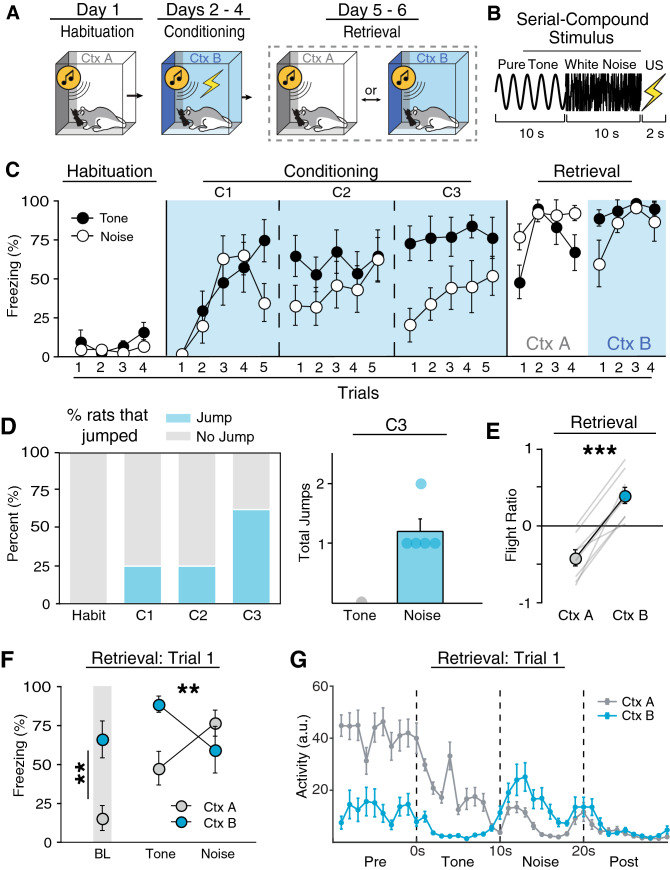Figure 1.
A serial compound stimulus (SCS) elicits context-dependent flight-like behavior. (A) Behavioral design. (B) Schematic representation of the SCS. (C) Average freezing data for tone and noise stimuli during each SCS presentation during Habituation, Conditioning, and Retrieval. Rats showed lower freezing to the noise on the second and third day of conditioning. (D) Percentages of rats that showed at least one jump during an SCS for each respective day of behavioral testing. Of the rats that showed at least one jump, jumps were exclusive to noise stimuli (C3). (E) Average flight ratio in which positive numbers represent increased movement to the noise relative to tone, whereas negative numbers represent decrease activity relative to tone. Rats displayed flight like behavior when tested in the conditioning, but not habituation context. (F) Average freezing data during Retrieval shows that rats tested in the conditioning context showed high freezing during baseline and the first tone presentation but decrease to the noise, whereas rats tested in the habituation context showed low freezing to baseline and the tone which increase to the noise. (G) Averaged motor activity data from 10 s before SCS onset to 10 s after SCS offset in both the Habituation (Ctx A) and Conditioning (Ctx B) contexts. All data are represented as mean ± SEM pooled across sex [within-subjects design (n = 8)]; *, **, and *** denote p < 0.05, p < 0.01, and p < 0.001, respectively.

